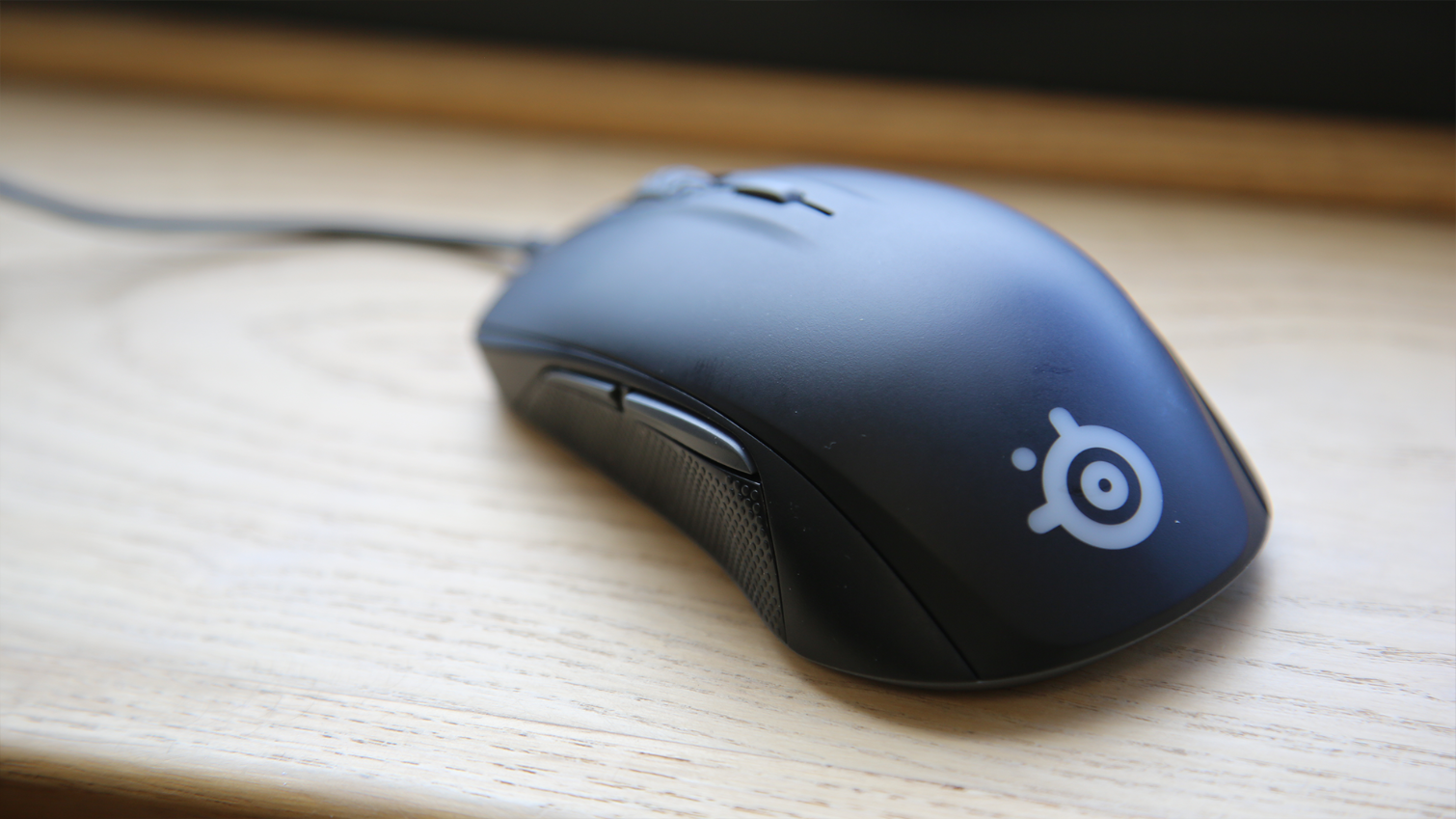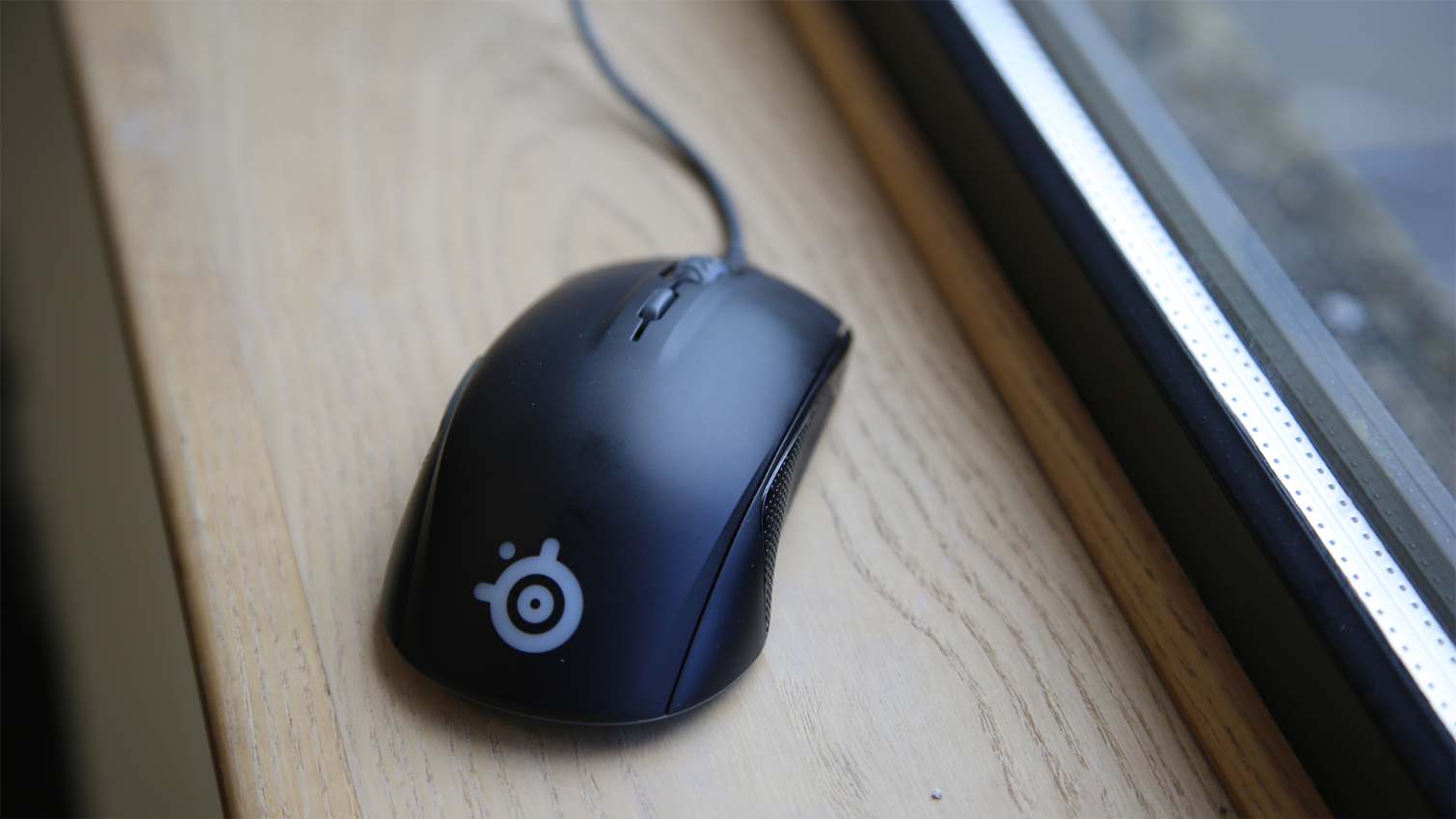Tom's Hardware Verdict
The SteelSeries Rival 110 is one of the best budget gaming mice you can buy - as long as you don't expect too much.
Pros
- +
Great price
- +
Good performance
- +
Comfortable
- +
Good software
Cons
- -
Not a huge amount of features
- -
Extra buttons only on the left-hand side
- -
Feels a bit too light
Why you can trust Tom's Hardware
The SteelSeries Rival 110 is billed as a competitive gaming mouse that focuses almost solely on that one true quality we all care about, performance. In an increasingly crowded market, where many of its competitors are cramming ever-more ostentatious (and often superfluous) features into their gaming mice, SteelSeries’ aim to create a “streamlined” (its own words) gaming mouse is certainly welcome for anyone after a no-nonsense and affordable pointer from an established brand.
The SteelSeries Rival 110 at time of review is up for grabs for a measly $29.99 US or £29.99, an impressively tempting price point, and one which places it among budget gaming peripherals such as the Logitech G300s and the VyFky F500. These mice offer decent –- but unexceptional -– performance and features. So if SteelSeries can bring the quality of its higher-end offerings down to this price point, it will have a winner.
While the SteelSeries Rival 110 is more expensive than that Logitech G300s, it offers higher CPI (dots per inch), with a maximum of 7,200 compared to the G300s’ 2,500. It's also offered in black, grey, or white.
7,200 isn’t the highest CPI we’ve seen in a mouse -- by a long shot. The Cooler Master MM830 offers a frankly absurd 24,000 CPI resolution. But most mice around this price point offer similar if not less CPI for the money. That said, going back to the MM830’s CPI, realistically it’s far higher than you’d ever likely need anyway.
By keeping the CPI -- and other features we’ll get to -- reasonable, SteelSeries is able to keep the price down, while still offering the core experience we’ve come to expect from the brand.
Design and Comfort
If you've used the original SteelSeries Rival 100 -- or any of SteelSeries’ mice for that matter -- then you’ll already have a good idea of how the Rival 110 looks and feels. As the price suggests, this is a mouse that keeps things simple. As standard you get an ambidextrous design that makes it comfortable to hold, regardless of which hand you hold your mouse in. However, there’s a crux here: The two additional side buttons are only located on the left-hand profile of the mouse, making them tricky to reach if you’re left-handed. That design choice is a bit baffling, however adding two additional buttons on the opposite side would increase production cost. And as the vast majority of gamers are right-handed anyway, we can let this one slide.
With a length of 120.6 mm (4.7-inches) and a width of 68 mm (2.7-inches) at its widest, the SteelSeries Rival 110 is a mid-sized mouse that should fit comfortably in most people’s hands, unless of course you’ve got hams for fists. Personally, we had no issues using it for long periods of time.
Get Tom's Hardware's best news and in-depth reviews, straight to your inbox.
We’ve used a number of SteelSeries gaming mice in the past, so we're used to how they feel. But even if you’ve never held a SteelSeries mouse before, you’ll likely find it very comfortable to use from the get-go. Unlike some gaming mice with their futuristic angular edges and edgy designs, the Rival 110 is smooth and well-rounded, creating a very comfortable device.
The Rival 110 is made out of plastic, and weighs a rather light 87.5g, but it doesn’t feel cheap or insubstantial because of it. The top of the mouse is covered in a matte soft-touch finish, and the sides have a dotted texture that makes the Rival 110 easier to grip.
Of course, this being 2019, the SteelSeries Rival 110 includes RGB lighting, which by default makes the scroll wheel and the logo at the back of the mouse light up like a circus. That said, as RGB goes, the effect here is understated, and the colors can of course be configured using the SteelSeries Engine 3 software.
Overall, the Rival 110 is a comfortable mouse to use right out of the box, which is good because there’s no way to customize the feel at all. There are no no hot-swappable parts as found in Corsair’s Glaive RGB Pro, no removable weights, or anything along those lines. For the most part, what you see with the SteelSeries Rival 110 is what you get. But then we wouldn't expect more from a mouse that costs this little.
Specifications
| Sensor Type | SteelSeries TrueMove1 Optical |
| Sensitivity | 7,200 CPI |
| Polling Rates | 1,000 Hz |
| Programmable Buttons | 6 |
| LED Zones & Colors | RGB |
| Cable Length | 200cm |
| Weight | 87.5g |
Gaming Performance
As with other SteelSeries gaming mice, the Rival 110 is a solid performer. It’s consistent and dependable, smooth in first person shooters, and the buttons up top feel good, thanks to mechanical switches. For the price, that’s pretty much all you can ask for, and while it doesn’t really excel in any particular area, it does the job –- and does it well.
The SteelSeries Rival 110 features the company’s new TrueMove1 Optical sensor, which does a fabulous job of tracking the mouse’s movements without any jitter. It feels responsive and accurate, which is key in a gaming mouse -- especially if you’re playing competitive online games where pinpoint accuracy and super-quick reflexes are essential.
You can switch the CPI sensitivity from 100 to 7,200 in increments of 100 by pressing the CPI switch button beneath the scroll wheel. This gives you a decent level of control over how the Steelseries Rival 110 feels, and there’s a noticeable difference in speed as you reach the higher CPI levels.
As we mentioned earlier, the maximum 7,200 CPI is far from the highest CPI we’ve seen in a gaming mouse, but we found that to be more than enough for our play style. Anything higher, and you get a mouse that can feel too fast and imprecise, unless you're a truly elite-level competitive gamer. Sticking to a sensible 7,200 is a wise move in our view -- especially as a lot of players will be using a CPI setting well below that.
While the build quality of the mouse is decent, it does in some ways feel like a budget mouse. In a way that’s good: Its weight meant we could easily wiz it around our desk, going from one end of our ultra-wide 21:9 monitor to the other with ease. However, those after a heavier feel will definitely want to opt for something else.
Features and Software
As the software is concerned, there isn't a huge amount of customization options available here. But there’s enough to tweak that allows you to get the SteelSeries Rival 110 to behave the way you want it to. Not only can you alter the speed and sensitivity of the mouse via software, but each of the buttons is reprogrammable. With a bit of time spent playing with the options, you’ll end up with the mouse that can really make a difference to your gaming.
The SteelSeries Engine software is easy to use and looks attractive. If you don’t want to mess around with detailed settings, the SteelSeries Rival 110 works very well straight out of the box, too.
Bottom Line
For the price, the SteelSeries Rival 110 offers a decent and dependable gaming experience. While it doesn’t do anything exceptionally well, you won’t be disappointed considering the $30 price. Its customization options are limited, but there’s enough to tweak that you should be able to get the Rival to behave the way you want it to. As far as budget gaming mice go, it strikes a good balance between budget-friendly compromise, comfort, and solid performance.
Image Credits: SteelSeries, Tom's Hardware
MORE: All Mice Content
MORE: All Gaming Content



